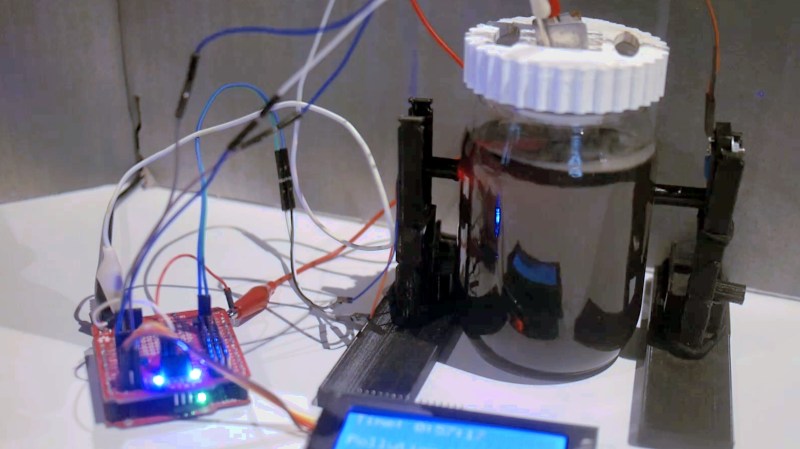We see a lot of great STEM education projects. These projects have a way of turning into something much larger. How many commercial devices and machines are built on Raspberry Pi’s and Arduinos? [Ryan Beltrán] is using common materials to teach people how to clean water. This particular kit demonstrates a water purification process called electro-coagulation.
When current is passed through two electrodes suspended in water it changes the surface charge on the suspended solids. This causes the solids, metals, and oils to clump together which makes them considerably easier to treat and clean.
The kit consists of a jar, electrodes, some 3D printed parts, and a pre-flashed Arduino. There’s also salts and filters to finalize the purification process. Students can start the experiment right away and if they’re inspired they’ll have all the tools to try more advanced techniques.
Often STEM kits lean heavily to robotics or computer science, but there are so many vast and interesting fields out there with problems that need to be solved.


















What is the actual science behind this? The square space website link to learn more is broken. I get the concept – some sort of electrolysis treatment encourages coagulation, but beyond being able to the use coarser grained filters. What about pathogens? Overall, it seems a bit snakeoil-ish
Maybe you’re supposed to put a LOT of current through the electrodes and re-combine the hydrogen and oxygen.
Hey, kids – if you put a different tube over each electrode, you can collect the Hydrogen separately and store it!
I’d like to see some schools use the Golden Book of Chemistry Experiments as a lab manual.
I mean, the article says it’s an electrocoagulation setup: https://en.wikipedia.org/wiki/Electrocoagulation
To be clear, the process he most prominently describes in the YouTube video is one of the first steps in wastewater treatment, and is called electrocoagulation.
In order to make drinking water you still have to go through a whole menagerie of steps. To simplify, however, they are flocculation, filtration, and finally, sterilization.
Also, EC (electrocoagulation) will only remove some heavy metals under very specific voltage and pH conditions.
This is okay for stem education, but only the beginning of the water treatment process.
This was pretty much what I wanted to know. Thank you
Brilliant, thank you!
Very much this! Our website is in need of an overhaul but we don’t have the resources/bandwidth to do it just yet. A lot of our stuff lives on YouTube, this hackaday page, and curriculum we’ve developed with educators that we share. The technology has been around for years and it needs more research so we wanted to make it easy and fun to test it out for all levels of experience.